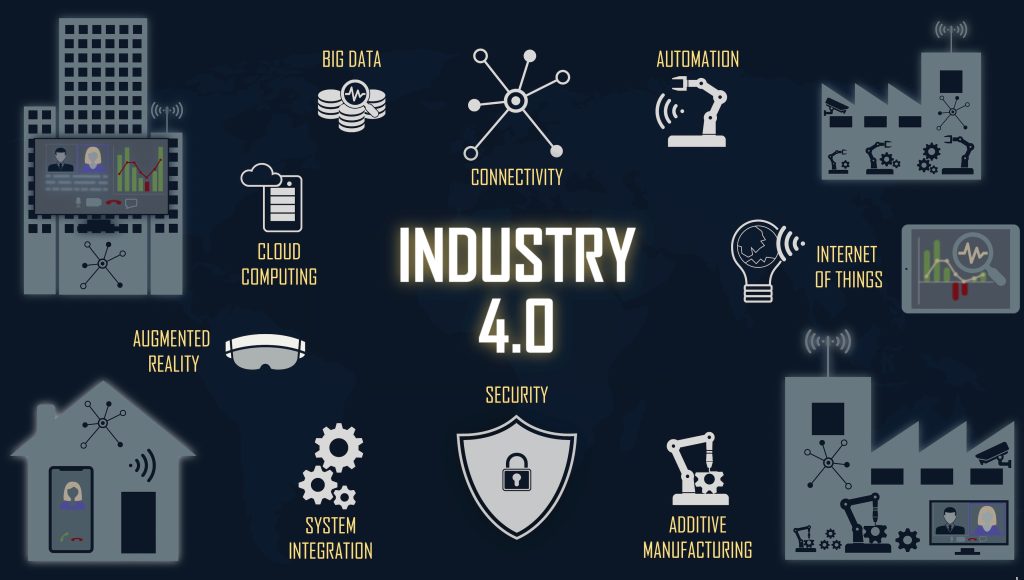The rapid pace of technological advancements and the integration of digital processes with physical systems have ushered in the era of Industry 4.0. Often termed the ‘Fourth Industrial Revolution’, this phenomenon has become the focal point of discussions surrounding the future of business, especially for Small and Medium Enterprises (SMEs). As these SMEs play a pivotal role in numerous global economies, understanding how they can leverage or be affected by Industry 4.0 becomes paramount.
Decoding Industry 4.0
For the uninitiated, Industry 4.0 might appear as an intricate web of buzzwords. But when we dissect it, at its core, it’s about intertwining the realms of digital technologies with traditional industrial practices. Components such as the Internet of Things (IoT), Artificial Intelligence (AI), big data analytics, and machine learning are the cornerstones that support this edifice.
The Alluring Opportunities For SMEs
A Leap in Productivity
- Optimal Resource Use: The predictive nature of AI, combined with machine learning, has the potential to foresee machine maintenance needs. This cuts down on downtime, ensuring smooth operations.
- Embracing Automation: Tasks ranging from managing stock to projecting sales can be streamlined. It’s similar to bolstering your team with an efficient, unseen force.
Putting Customers at the Forefront
- The Personal Touch: Big data analytics offers insights so granular that SMEs can sculpt their services or products to resonate with individual customer needs and desires.
- Instantaneous Feedback Mechanism: Acquiring real-time data equips businesses with the agility to tweak their offerings based on instantaneous feedback, fostering stronger customer relations.
Revolutionizing the Supply Chain
Gone will be the days of grappling with the unpredictability of stock levels. The union of IoT and data analytics ensures transparency throughout the supply chain, leading to timely deliveries and significant cost reductions.
Hurdles Along The Path
While the promise of Industry 4.0 shines bright, it’s not devoid of challenges that SMEs must grapple with.
The Financial Quagmire
The initial financial thrust required to incorporate Industry 4.0 technologies can be daunting, especially for SMEs with limited resources.
Bridging the Knowledge Gap
Emerging technologies necessitate a new set of skills. SMEs might face hurdles in either upskilling their current workforce or scouting for new talent proficient in these domains.
Safeguarding the Digital Fortress
Enhanced connectivity, while being a boon, opens the floodgates to potential cyber threats. SMEs need to be vigilant and proactive in bolstering their digital defenses, an endeavor that could be resource-intensive.
To Embrace Or Hesitate?
The challenges might prompt SMEs to question the feasibility of embarking on the Industry 4.0 journey. However, it’s crucial to realize that this isn’t merely a fleeting trend. The wave of digital transformation has already swept the business landscape.
For SMEs to not just survive but thrive, integrating these advancements isn’t a luxury, but a pressing necessity.
Drawing Parallels For Perspective
Consider the Industry 4.0 transformation as comparable to giving wings to a car in a world dominated by ground vehicles. The initial challenges of learning to fly (investment and skilled resources) might seem daunting. Yet, once airborne, the perspectives and horizons it opens up make the endeavor immensely rewarding.
Embracing Industry 4.0 is similar to a caterpillar metamorphosing into a butterfly, where initial efforts and changes lead to a vibrant evolution, unlocking potential in previously unimaginable ways.
Government’s Role In SMEs’ Transition To Industry 4.0
The adoption of Industry 4.0 by SMEs is not just a corporate endeavor but can be significantly influenced by government policies and initiatives. Recognizing the economic implications, many governments are stepping in to aid this transition. Here’s a snapshot of potential interventions:
1. Financial Boosters
Seed Funding: Offering targeted funds or low-interest loans for SMEs to embrace Industry 4.0 technologies.
Tax Incentives: Provision of tax breaks for digital transformation investments can motivate SMEs.
2. Upskilling and Training
Collaborative Learning: Partnerships between academic institutions and industries can foster relevant skill development.
Training Subsidies: Financial support for SMEs to train their workforce in new technologies can address the skill deficit.
3. Strengthening Infrastructure
Digital Hubs: Creation of centers providing SMEs access to advanced technologies, facilitating hands-on exploration.
Improved Connectivity: Investing in expansive and robust internet infrastructure to benefit even remote SMEs.
4. Regulatory and Security Measures
Clear Regulations: Streamlined guidelines for digital operations can provide a roadmap for SMEs.
Cybersecurity Guidance: Offering resources and standards to bolster SMEs’ digital defenses.
5. Awareness Initiatives
Informative Workshops: Events to educate SMEs about Industry 4.0.
Spotlight on Success: Highlighting SMEs that have adeptly integrated digital practices, serving as role models.
FAQs: Charting The Industry 4.0 Course
Where should an SME begin its Industry 4.0 journey?
Start with introspection. Audit your existing processes, pinpoint areas ripe for automation or optimization, and then lay out a strategic, phased implementation plan.
Is the Industry 4.0 paradigm exclusively beneficial for manufacturing SMEs?
No, it’s a common misconception. From hospitality to retail, businesses across diverse sectors can harness these technologies for a myriad of applications.
How can an SME fortify itself against cyber threats?
Regular training sessions for employees, investing in state-of-the-art cybersecurity tools, and having a well-articulated response strategy for potential breaches are vital.
How quickly can an SME expect returns after integrating Industry 4.0?
Returns can vary, but typically SMEs see tangible benefits within 1-2 years post-integration.
Are there sectors that might not benefit from Industry 4.0?
All sectors can reap benefits, but the scale and nature of advantages might differ based on industry specifics.
For SMEs, the voyage through the vast and often tumultuous waters of Industry 4.0 is riddled with both promise and peril. While the allure of unmatched efficiencies and customer experiences beckons, the challenges of financial outlay, skill acquisition, and cybersecurity loom large. Yet, one thing remains clear: In the ever-evolving business arena, adaptation and innovation are the keys to sustained success.
SMEs, thus, find themselves at a crossroads – to harness the winds of Industry 4.0 to set sail to new horizons or remain anchored, risking obsolescence. The choices made today will chart the course for their tomorrow.
